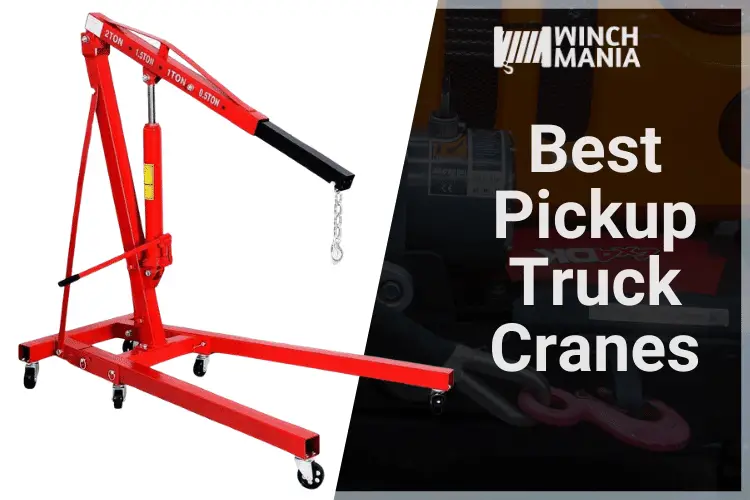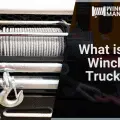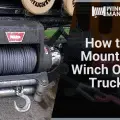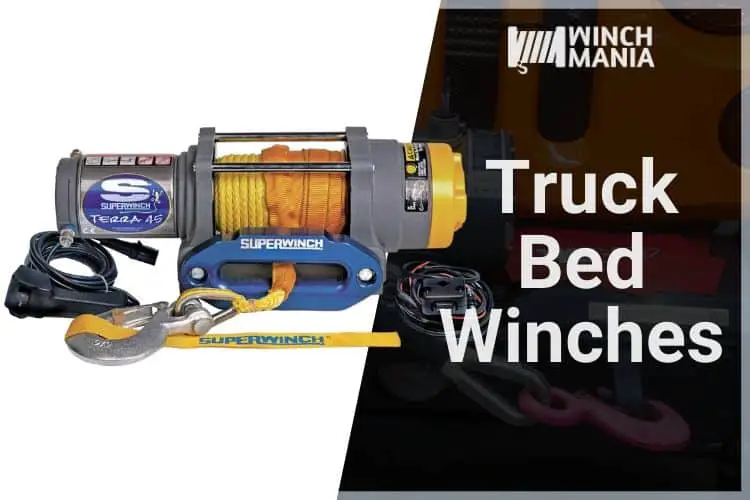Everyone who has gotten stuck at least once knows that a winch is not a luxury, but a necessity. When you drive your truck outside the city, you will probably encounter large rocks, dirt, snow, or sand along the way.
Even if you are a high-class driver and riding on rough terrain and off-road does not mean anything unusual for you, you should still play it safe and take along a self-recovery winch. The winch installed on your truck will allow you to get out of even the most difficult situation, which can catch you outside the city.
At a Glance
Installing a Winch
Before buying a winch, it is recommended to study the market and consider possible options. A variety of winches that are offered for sale can cope with the task of any complexity, from a small ATV to a full-size truck, for example:
- Ram 2500 Power Wagon
- Chevy 2500 HD
- Ford F150 Super Crew
Some trucks are supplied with a frontal winch built into the factory front bumper. But to install the winch to your truck, you should consider utilizing a new bumper or push bar with a winch mount. A different alternative is to use a hidden winch mount, which will enable you to install and detach the winch in front or behind your truck, just like a towing device.
Before deciding what size winch for the truck should you choose, select the installation method since not all winch producers operate with every available bumper or push bar. The most experienced off-road enthusiasts recommend starting with the front winch. Installing a winch in front of the car provides you with better visibility. Thus, it can best help you get out of every difficult situation you might encounter on the way.
Which Engine to Choose
Most winches are provided with an engine, but some of them are hand-operated, particularly when they are designed for intermittent use or performance in conditions where it is complicated to connect to the mains.
There are 4 base types of engines:
- Electric
- Thermal
- Hydraulic
- Manual
Electric
Winches with an electric motor are split into 2 classes: engines connected to the network, and engines running on battery power, connected, for example, to an automobile or truck. Electric hoists are designed for occasional usage due to overheating. It is better to use a winch implemented with a thermic protector so as not to damage the winch under heavy load or excessive use.
Because they are prone to overheating, electric winches are advised not to be used in one, long haul. Instead you should use them in short bursts.
If you selected a winch on the battery, ascertain the charge is sufficient for the winch. With a power of 12 volts, the winch can reach peak consumption of more than 400 amperes. Some battery operated electric winches need a power source that provides 24 volts. These are usually for large trucks and they have a capacity that usually goes beyond 15000 lbs.
Thermal
Winches with a heat engine are heavier than winches with an electric motor. On the other hand, their duty cycle is 100%, that is, they can work without a break. These can be considered more reliable, as they can perform arduous tasks for an indefinite amount of time. But they are not as cheap, nor as available in the market as electric winches.
Hydraulic
Hydraulic winches are joined to a hydraulic system that runs the cylinder. Their work cycle is likewise 100% and they can withstand very high loads. On the other hand, the hydraulic system should be properly accommodated for such use: a hydraulic winch requires pressures up to 165 bar and flow rates up to 62 liters per minute. Such winches are typically practiced on vessels or platforms at sea.
Hydraulic winches need to have your vehicle engine running while it is running. This allows it to perform really heavy duty tasks. Of all the types of winches ever invented, hydraulic winches are the most powerful. And since they can be operated for an indefinite amount of time, they can be considered the most reliable. However, they are also expensive.
Manual
Manual winches are intended for smaller duties. They are simple to handle, as they do not need a power supply. Their source of power is an external force, usually the operator. They use the force you apply on them, and then they amplify it to be able to pull heavy loads. Most of the time, these winches can only handle loads of up to 1000 lbs.
Manual winches should only be used as a backup winch for vehicle recovery. They are not meant to always pull trucks out of dire situations. The amount of effort you need to exert on it can ultimately damage your body. But if your electric, thermic or hydraulic winch fails, then a manual winch is a welcome tool.
Understanding Winch Capacity
Winches vary in size and capabilities, therefore, to figure out what size winch for a truck is, it is enough to correctly match the traction force of the device with your truck. The general rule is to simply double the weight of your car:
- Medium-sized pickups such as the Jeep Gladiator or Nissan Navara can use a winch with a payload of 9,100 to 9,450 pounds.
- Full-size trucks, such as the Toyota Tundra or Chevrolet Silverado, require a winch with a payload of at least 12,100 or 12,450 pounds.
- For large trucks, such as diesel with a large number of accessories, large wheels and the winches that can withstand from 16,450 to 18,100 pounds are suitable.
If you are still in doubt, consider getting a larger winch. The higher the indicator, the better. It can also reduce the load on the winch and extend its life.
Larger winches also have larger engines and linear coils, so you can easily compare information from different manufacturers to see what size winch for the truck is the best and how it will be mounted.
Also, a good rule to remember is to have a winch that has a weight capacity that is 1.5 times than that of your vehicle’s gross weight. This is to make allowance for extra baggage like equipment. The allowance also helps in ensuring that the winch can handle the pull should your vehicle get stuck in mud or on a slope.
Which Cable to Choose
When it comes to choosing between synthetic and steel cable, there is a lot of controversy. Steel is the most common – incredibly strong, durable, and resistant to abrasion on stones material.
However, over time, steel cables will corrode, collapse, and break. If this happens during operation, the steel cable can cause serious injury due to the accumulation of potential energy in it. Steel cable holds too much kinetic energy when under load. If it snaps during a winching operation, the kinetic energy stored is enough to tear through flesh. If the cable is thin enough, it can also be sharp enough to cut through bones.
Synthetic cables are much lighter and have less energy potential. Thus, if they break under load, there is less chance of injury or damage.
The steel cable is rugged and quite easy to sustain. But on the other hand, it may be too bulky for the front of your car. They are ideal for use on highly abrasive surfaces.
If you regularly drive over sand, dirt, and stones, then a steel cable is a good choice for you. When working with the rope, heavy gloves should be worn to protect hands. Because a steel cable can unintentionally hurt a hand.
The synthetic cable is safer, more flexible, lighter, and easier to handle than steel. You don’t need gloves to handle them. But such cables are very sensitive to chemicals, ultraviolet radiation, heat, and abrasion.
The synthetic cable also needs the right care and sustentation. It must be washed periodically after use in sandy or dirty conditions.



